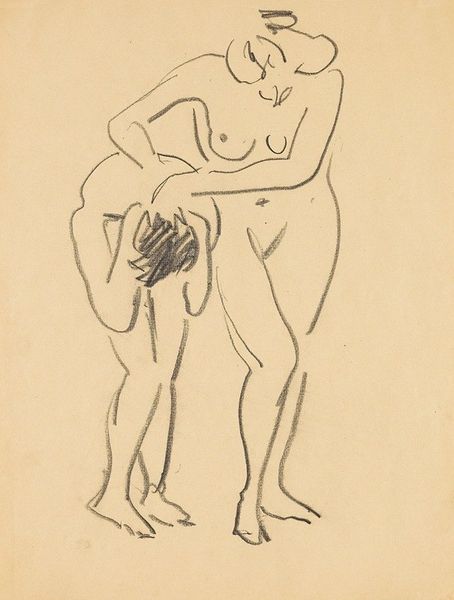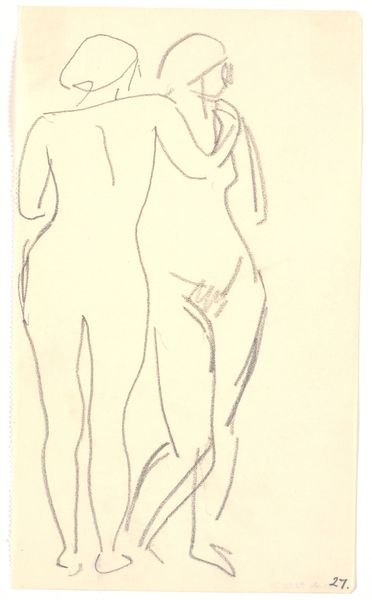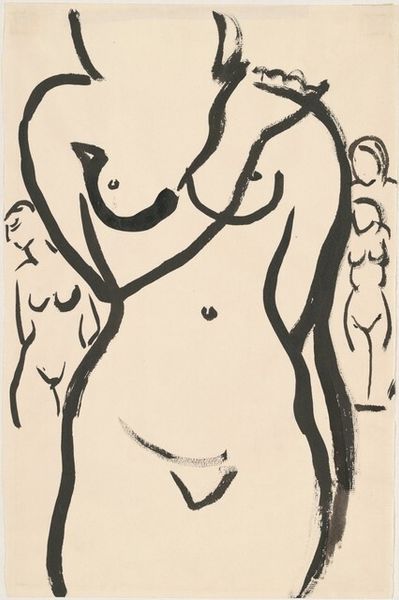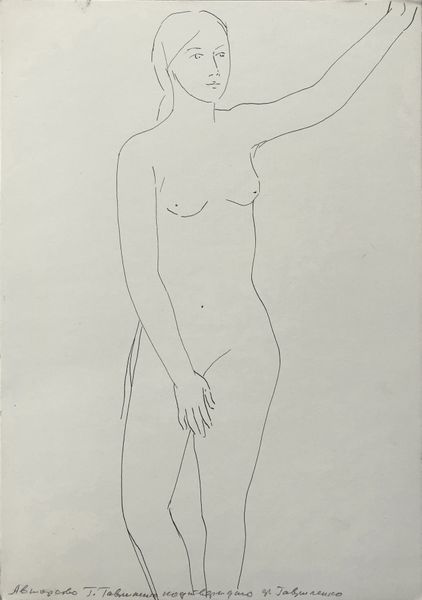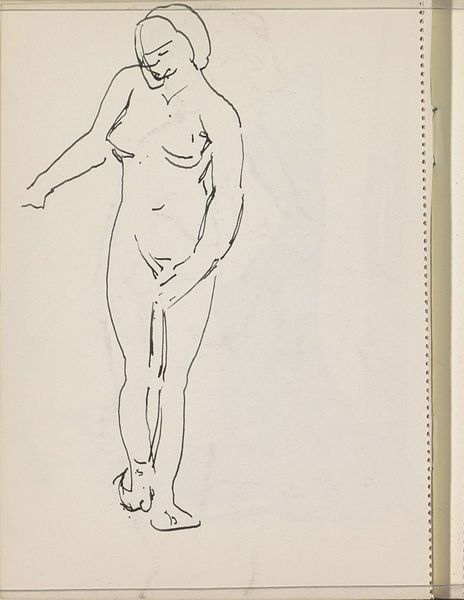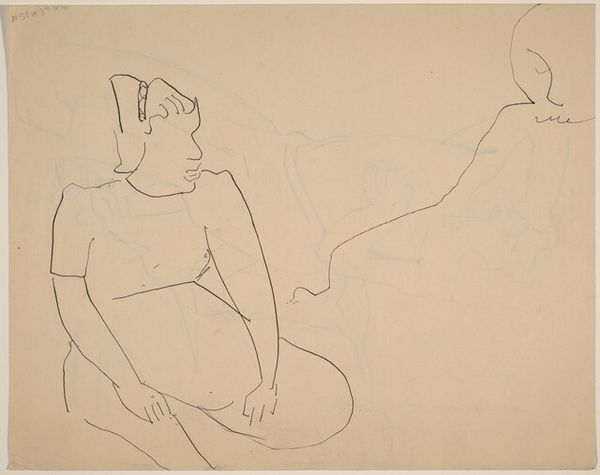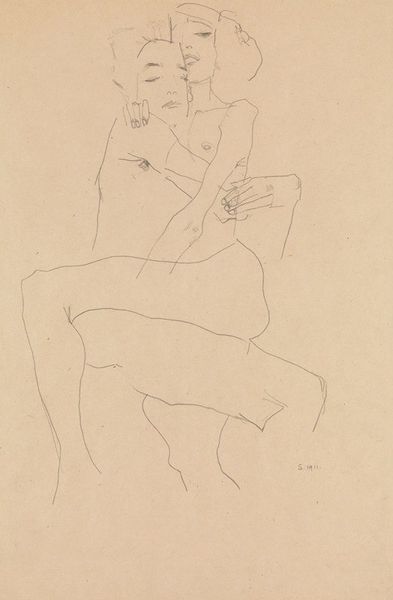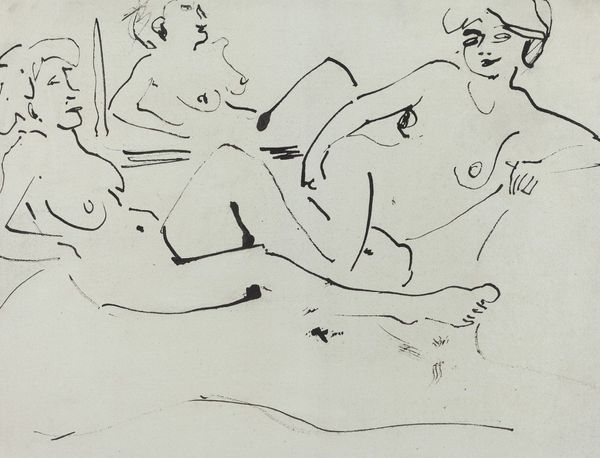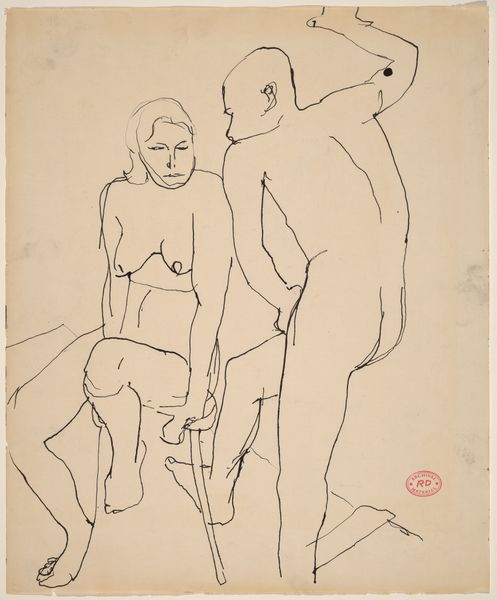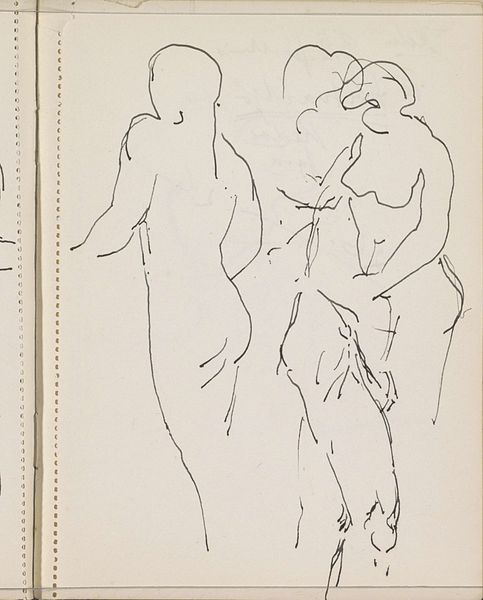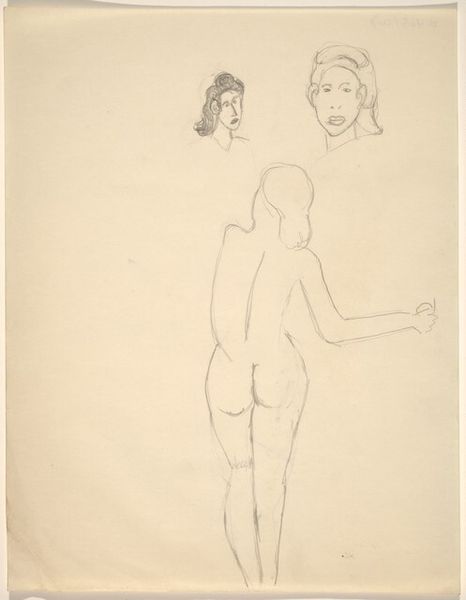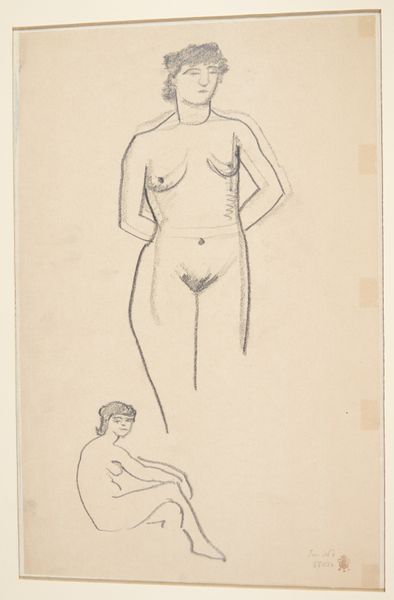
drawing
#
drawing
#
amateur sketch
#
imaginative character sketch
#
light pencil work
#
thin stroke sketch
#
incomplete sketchy
#
figuration
#
idea generation sketch
#
character sketch
#
ink drawing experimentation
#
group-portraits
#
expressionism
#
portrait drawing
#
nude
#
initial sketch
Copyright: Public Domain: Artvee
Editor: This is "Man and Woman" by Ernst Ludwig Kirchner, a drawing from the early 1910s. The figures are rendered with quick, expressive lines. They almost seem caught mid-movement. What stands out to you? Curator: It's a fascinating piece because it shows the development of Kirchner's aesthetic, firmly rooted within its socio-political moment. Remember, the early 1910s were a time of immense social change and burgeoning anxieties in Germany, particularly around industrialization and urbanization. Does the work reflect those tensions? Editor: I see what you mean. The figures do look somewhat awkward and vulnerable, as though reacting to something… jarring. Curator: Exactly. This sketch, and his broader body of work, acted as a critical lens on that unease. Expressionism sought to portray raw emotional experience, pushing against academic traditions, right? Consider the social function of displaying the nude body. Who gets to do this and why? Editor: Good question! Perhaps the artist tried to express freedom of choice through these daring subjects? Curator: That's plausible, yet there's often a subtext when the female body is on display, linked to male gaze, spectatorship, or commodity. What is particularly compelling in Kirchner is how he depicts both the male and female forms, challenging some of those conventional power dynamics. It’s through looking that art gains these meanings, doesn’t it? Editor: That's something I didn't really notice at first, the subversion. The artist clearly communicates something new via established traditions. Thanks for pointing that out. Curator: Absolutely! Analyzing a work through history helps unpack a deeper meaning, expanding how we, the public, view and receive the image today.
Comments
No comments
Be the first to comment and join the conversation on the ultimate creative platform.
